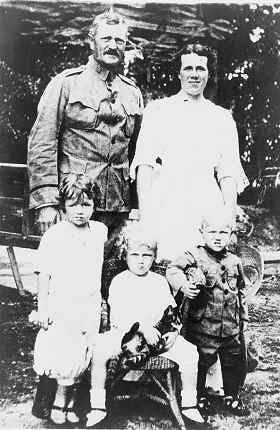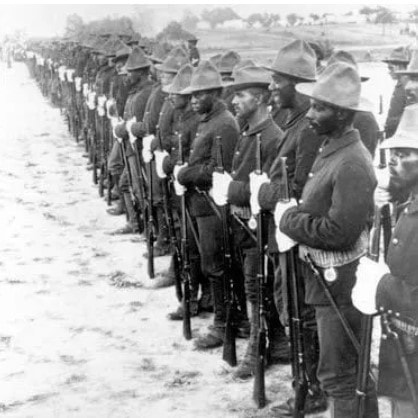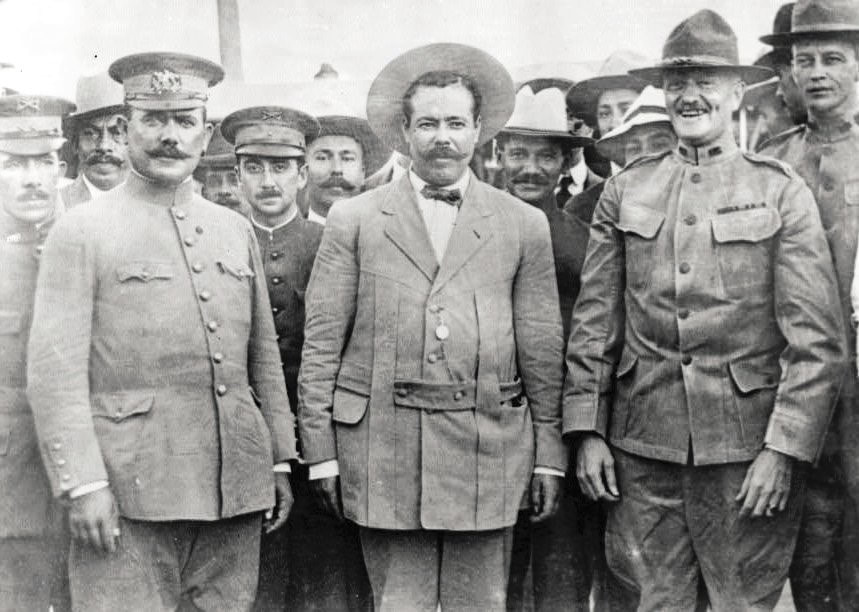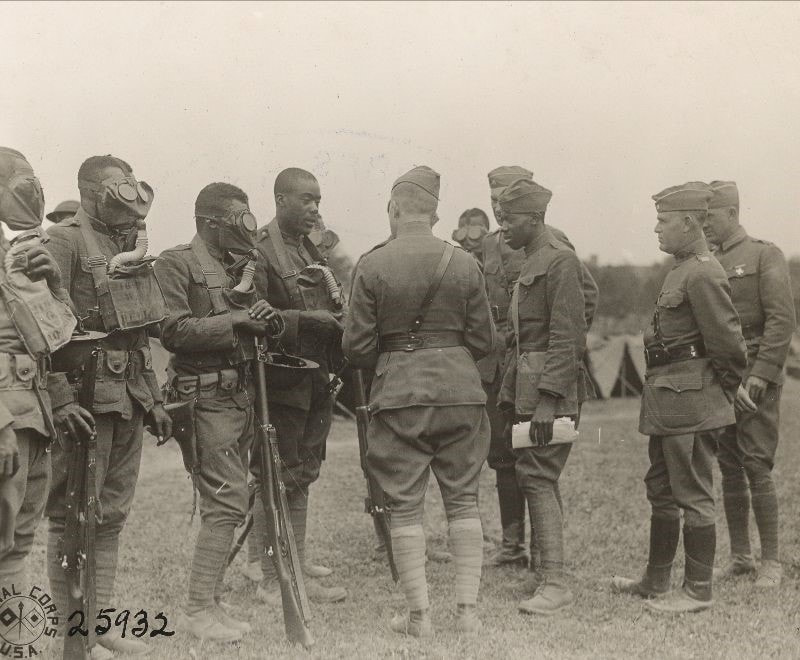
 John Pershing as a young boy. [The Story of General Pershing, Everett T. Tomlinson, 1919,)
John Pershing as a young boy. [The Story of General Pershing, Everett T. Tomlinson, 1919,)  John Pershing as a West Point cadet (Photo: public domain)
John Pershing as a West Point cadet (Photo: public domain)
Next, Pershing was posted to the University of Nebraska, where he taught military science. During his four years there, Pershing earned the law degree he’d so long wished for.
In 1896, he was promoted to 1st Lieutenant and assigned to a troop of the 10th Cavalry Regiment, one of the original regiments of Buffalo Soldiers, racially segregated black units. This began Pershing’s long association with black units.
When the Spanish-American War broke out, Pershing was again selected to command the Tenth Cavalry, this time as their quartermaster. On July 1, 1898 he led his men in the Battle of San Juan Hill alongside Theodore Roosevelt’s famous Rough Riders.
Pershing later recalled that
...the entire command moved forward as coolly as though the buzzing of bullets was the humming of bees. White regiments, black regiments, regulars and Rough Riders, representing the young manhood of the North and the South, fought shoulder to shoulder, unmindful of race or color, unmindful of whether commanded by ex-Confederate or not, and mindful of only their common duty as Americans.”
 Pershing (left) with the commander of the Philippines Constabulary (right) and Moro chieftains in 1910 (Photo: Fort Huachuca Museum)
Pershing (left) with the commander of the Philippines Constabulary (right) and Moro chieftains in 1910 (Photo: Fort Huachuca Museum) In the Philippines, Pershing fought against both the Moros, an indigenous Muslim people who had previously fought for their independence from the Spanish, and a wider Filipino insurrection. Pershing studied Moro culture and dialects, read the Koran, and built relations with various Moro chiefs in an effort to win them over.

He met and married Helen Frances Warren, the daughter of Francis E. Warren, a powerful Republican Senator from Wyoming. They had four children: Helen, Ann, Warren, and Margaret. Pershing took his family with him when he returned to the Philippines for a few years, then later posted to San Francisco.
 Pershing’s San Francisco home after the fire, with the arrow indicating the window through which his son was rescued (Photo: National Park Service)
Pershing’s San Francisco home after the fire, with the arrow indicating the window through which his son was rescued (Photo: National Park Service) Pershing described the failed mission as
“a man looking for a needle in a hay stack with an armed guard standing over the stack forbidding you to look in the hay.”
 Pershing arriving in Europe (Photo: gwpda.org)
Pershing arriving in Europe (Photo: gwpda.org)  One version of the Pershing Map (Photo: U.S. Army Corps of Engineers)
One version of the Pershing Map (Photo: U.S. Army Corps of Engineers)
General Pershing served as Army Chief of Staff from 1921 to 1924. During this time, he created a map of a proposed national network of military and civilian highways, which became the foundation of the Interstate Highway System.








